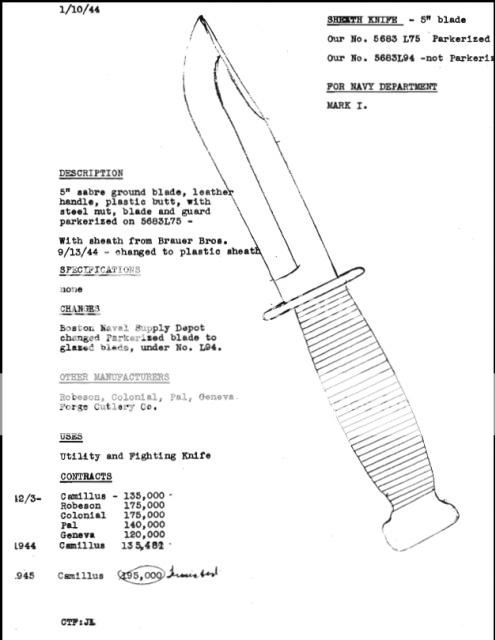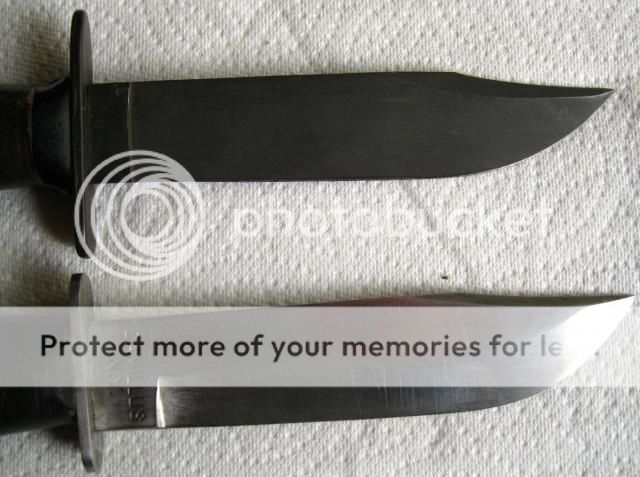Hello All,
I'm very new to the forum and had a question for the experts. This knife belongs to my father-in-law and it was given to him by his father who served in the US Navy during World War II. The story I received was this knife was issued to him during his service time. Since then it has sat in a toolbox gather rust, etc. I would like some help identifying it and cleaning it up. I don't want to destroy the patina by throwing it on a grinder and making it shiny but I also don't want chunks of rust, etc.
Any help you could give me on identification and tips on cleaning and preserving the metal and leather would be great. What I have been able to determine is that it is similar to the Camillus USN Knives issued during WWII but the stamping doesn't seem to match the records I have found.
Thanks,
Adam
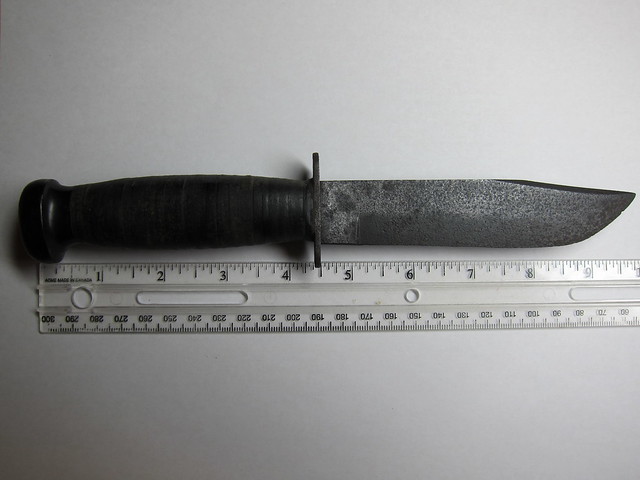
9 1.2 inch overall length with a 5 inch blade.
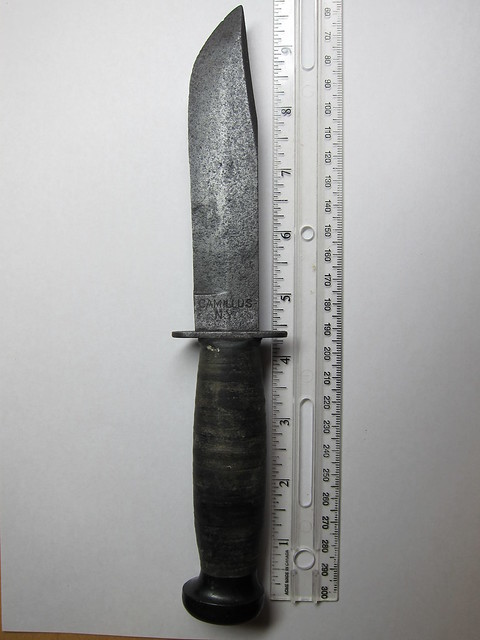
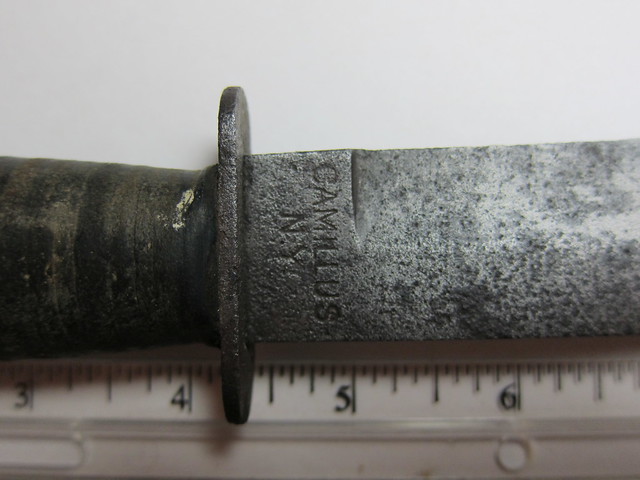



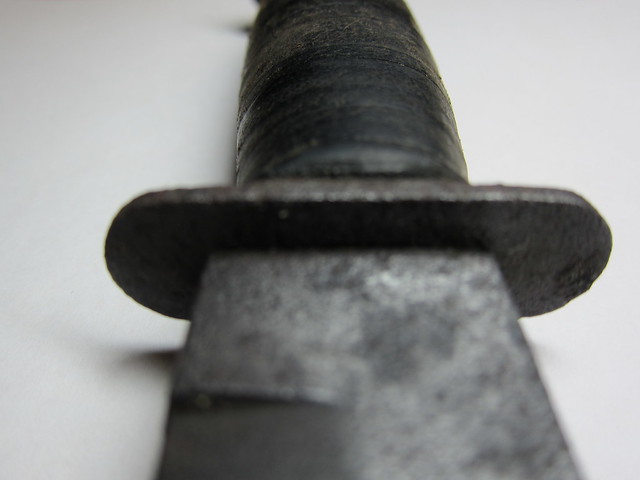
I'm very new to the forum and had a question for the experts. This knife belongs to my father-in-law and it was given to him by his father who served in the US Navy during World War II. The story I received was this knife was issued to him during his service time. Since then it has sat in a toolbox gather rust, etc. I would like some help identifying it and cleaning it up. I don't want to destroy the patina by throwing it on a grinder and making it shiny but I also don't want chunks of rust, etc.
Any help you could give me on identification and tips on cleaning and preserving the metal and leather would be great. What I have been able to determine is that it is similar to the Camillus USN Knives issued during WWII but the stamping doesn't seem to match the records I have found.
Thanks,
Adam

9 1.2 inch overall length with a 5 inch blade.







